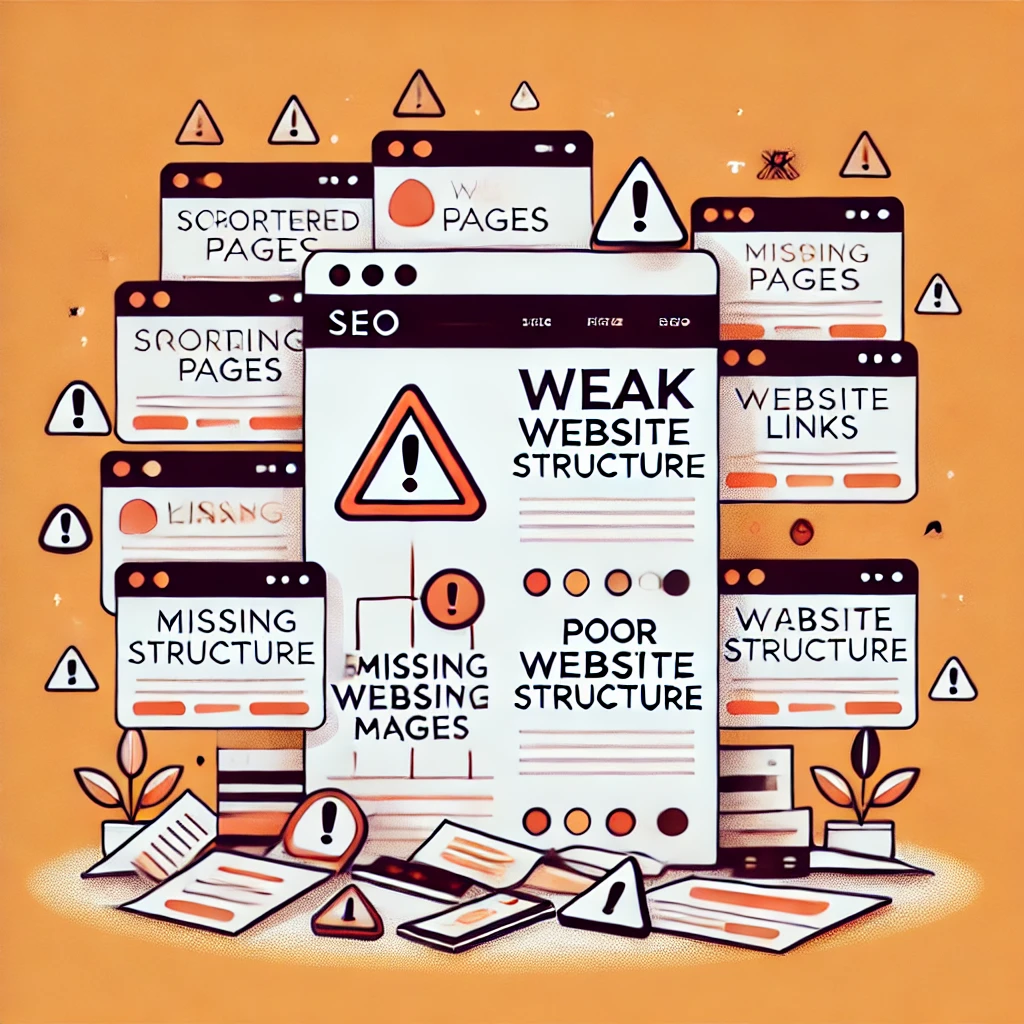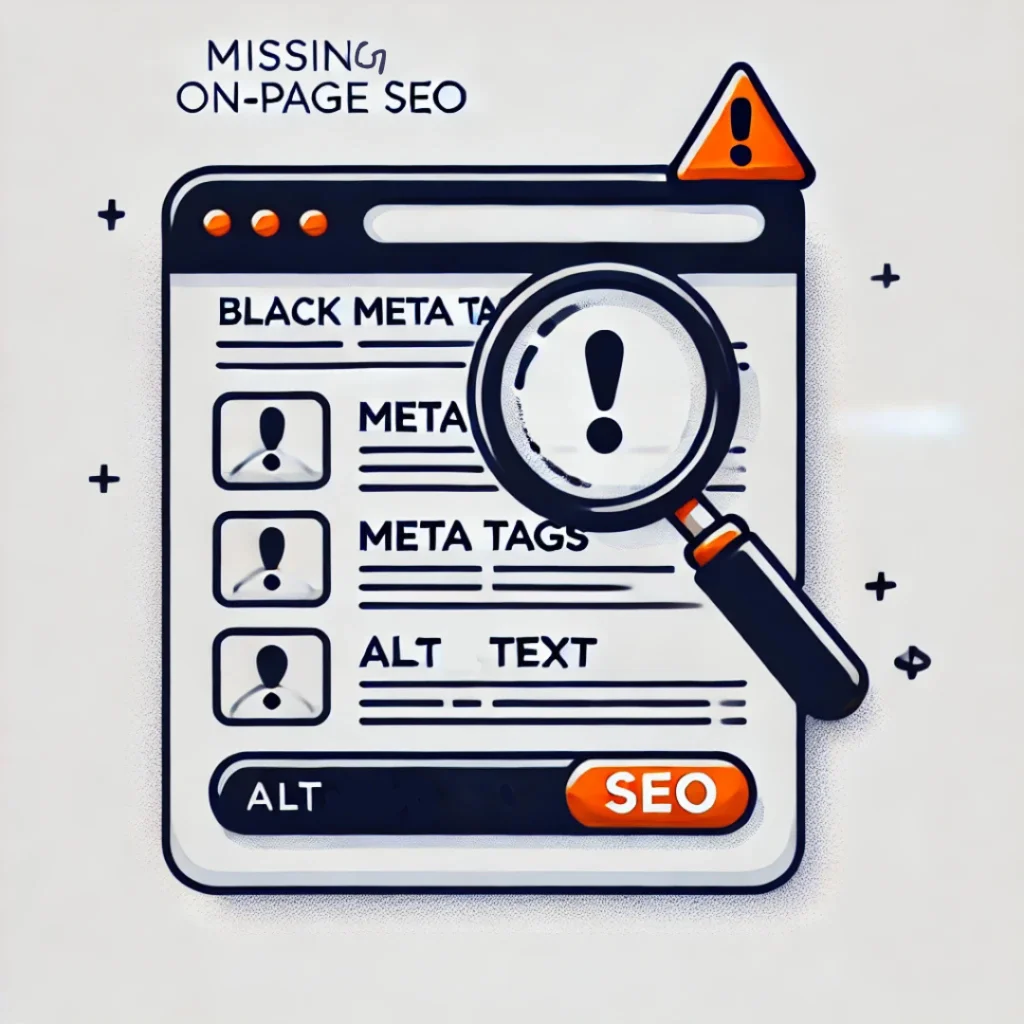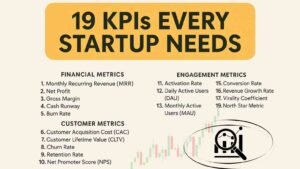SEO Related Mistakes and Their Improvements
SEO is the backbone of online visibility, helping businesses rank higher on search engines and attract organic traffic. However, even the best digital strategies can fail if common SEO mistakes go unnoticed. A single error—like slow website speed or poor keyword usage—can silently kill your rankings, reducing your website’s reach and conversions.
The good news? These SEO mistakes are fixable! In this blog, we’ll uncover the most common SEO errors and how to fix SEO mistakes that could be holding you back and provide actionable solutions to help you regain lost rankings. Whether you’re a beginner or an experienced marketer, this guide will ensure your website stays optimized, competitive, and search engine-friendly.
At Grow My Business, we’ve helped countless clients improve their search rankings and fix critical SEO issues. Many websites struggle with the same common SEO mistakes, which can silently reduce traffic and conversions. Here are the most frequent errors we see:
- Poor Keyword Research
- Weak Website Structure
- Slow Loading Speed
- Lack of Mobile Optimization
- Missing On-Page SEO
- Duplicate or Low-Quality Content
- Technical SEO Issues
- Bad Backlink Strategy
- Ignoring Analytics and Tracking
- Unoptimized URL Structure
1. Poor Keyword Research

Choosing the wrong keywords—or failing to research them at all—can result in low rankings and irrelevant traffic. Many websites either target overly competitive keywords or neglect long-tail variations that drive highly relevant visitors.
How to fix it:
Use keyword research tools like Google Keyword Planner, Ahrefs, or SEMrush to identify high-traffic, low-competition keywords. Focus on search intent and incorporate a mix of short-tail and long-tail keywords to maximize reach.
SEO Tip: Optimize content for user intent—not just search volume. A well-targeted keyword with lower traffic but high conversion potential is more valuable than a generic high-volume keyword.
2. Weak Website Structure

A poorly organized website makes it difficult for both users and search engines to navigate your content. Pages buried deep within your site, missing internal links, or inconsistent URL structures can negatively impact rankings.
How to fix it:
Ensure your site has a clear, logical hierarchy. Use a flat structure to minimize the number of clicks needed to reach any page. Implement breadcrumb navigation and ensure internal linking guides both users and search engines to important content.
SEO Tip: Conduct a site audit using tools like Screaming Frog to identify orphan pages and fix internal linking issues.
3. Slow Loading Speed

A sluggish website frustrates users and leads to higher bounce rates. Google considers Core Web Vitals as a ranking factor, meaning slow pages can push your site lower in search results.
How to fix it:
Compress images, enable browser caching, use a Content Delivery Network (CDN), and minimize unnecessary scripts. Tools like Google PageSpeed Insights and GTmetrix can pinpoint bottlenecks.
SEO Tip: Keep total page size under 2 MB and aim for a load time of under 3 seconds for the best performance.
4. Lack of Mobile Optimization

With mobile-first indexing, Google prioritizes the mobile version of your website for ranking. If your site isn’t responsive, you risk losing traffic and conversions.
How to fix it:
Use responsive design, ensure text is readable without zooming, and eliminate intrusive pop-ups. Test your site with Google’s Mobile-Friendly Test to spot usability issues.
SEO Tip: Optimize for mobile page speed by using lightweight images and minimizing excessive JavaScript.
5. Missing On-Page SEO

Failing to optimize title tags, meta descriptions, header tags, and images can result in missed ranking opportunities. Search engines rely on these elements to understand your content.
How to fix it:
Ensure each page has a unique, keyword-rich title tag and meta description. Use H1-H3 tags properly, add alt text to images, and structure your content for readability.
SEO Tip: Aim for title tags under 60 characters and meta descriptions under 160 characters to avoid truncation in search results.
6. Duplicate or Low-Quality Content

Thin, copied, or duplicate content confuses search engines and prevents your pages from ranking effectively. If multiple pages compete for the same keywords, Google may not know which one to prioritize.
How to fix it:
Use canonical tags to point to the preferred version of a page, rewrite thin content to add more value, and eliminate auto-generated or duplicate pages.
SEO Tip: For e-commerce sites, rewrite product descriptions instead of using manufacturer-provided content to stand out in search results.
7. Technical SEO Issues

Broken links, improper redirects, and missing XML sitemaps can cause crawling and indexing problems. Search engines may struggle to understand and rank your pages.
How to fix it:
Run a technical audit using Google Search Console, fix 404 errors, implement 301 redirects for outdated URLs, and submit an updated XML sitemap.
SEO Tip: Check for crawl errors in Google Search Console weekly to ensure search engines index all important pages.
8. Bad Backlink Strategy

Low-quality, spammy, or irrelevant backlinks can harm your website’s authority rather than boost it. Google penalizes sites with toxic backlinks, which can lead to ranking drops.
How to fix it:
Audit your backlinks using Ahrefs or Moz, disavow harmful links through Google Search Console, and focus on earning high-quality backlinks from reputable sources.
SEO Tip: Prioritize guest blogging, digital PR, and high-value content creation to attract natural backlinks.
9. Ignoring Analytics and Tracking
Without proper tracking, you won’t know what’s working or where your traffic is coming from. Many businesses fail to analyze performance, missing crucial opportunities for improvement.
How to fix it:
Set up Google Analytics, Google Search Console, and heatmaps (like Hotjar) to track user behavior. Regularly review bounce rates, conversion rates, and ranking trends.
SEO Tip: Create custom dashboards in Google Analytics to monitor organic traffic, goal completions, and keyword performance.
10. Unoptimized URL Structure

Messy, long, or irrelevant URLs can confuse both users and search engines, reducing your chances of ranking well.
How to fix it:
Use short, keyword-rich URLs that accurately reflect the page’s content. Avoid random numbers, special characters, or excessively deep folder structures.
SEO Tip: Keep URLs under 75 characters and use hyphens instead of underscores for better readability.
Improve Your SEO Approach
Fixing SEO mistakes is just the beginning—consistent optimization is the key to long-term success!
Need expert guidance? Check our SEO services and Get a free SEO audit and consultation today!
Contact us now to improve your rankings, drive more traffic, and grow your business.
Let’s take your website to the top of Google!





